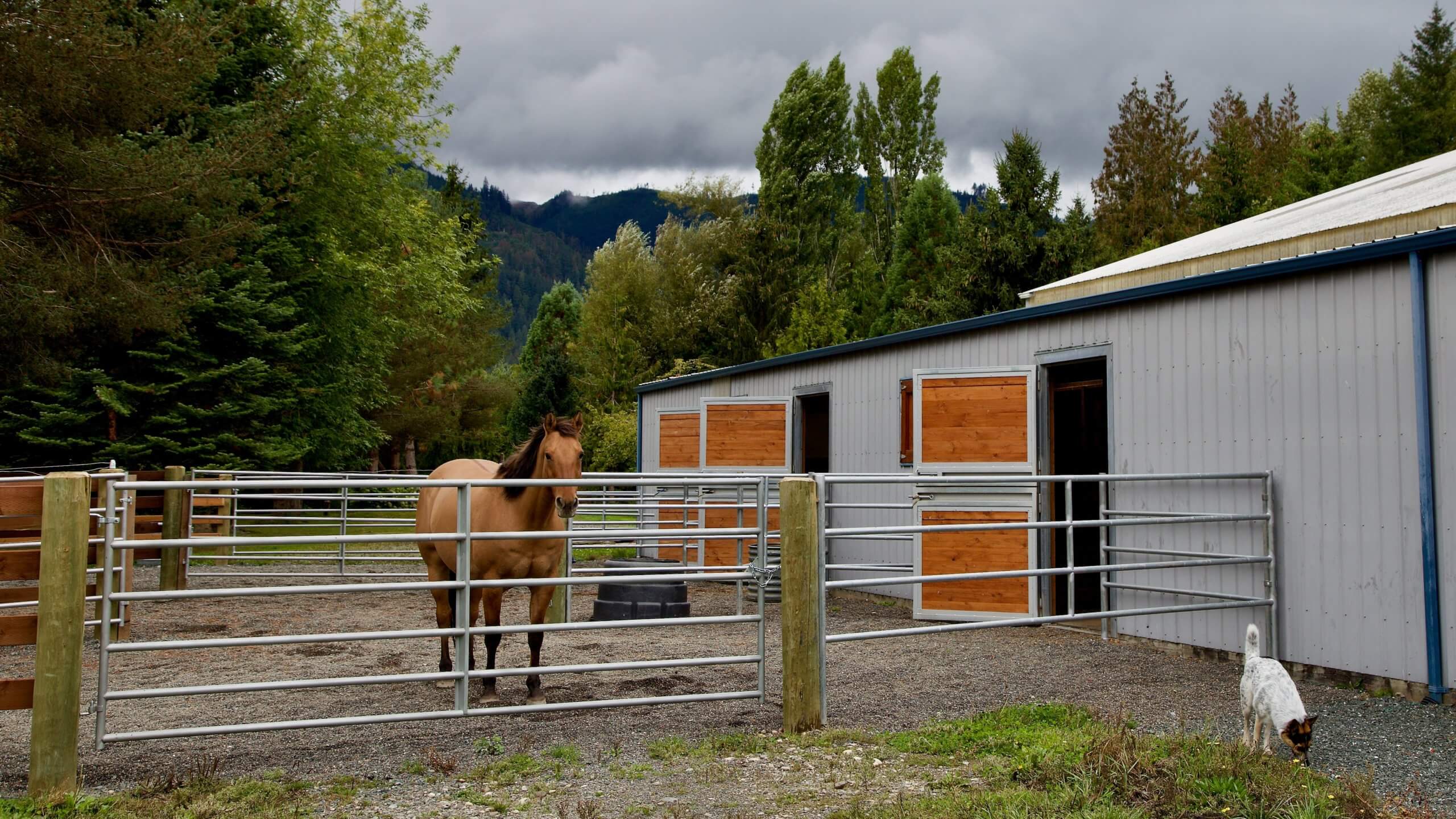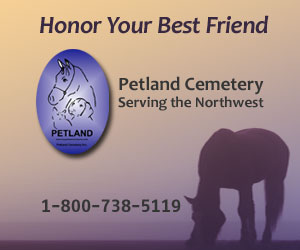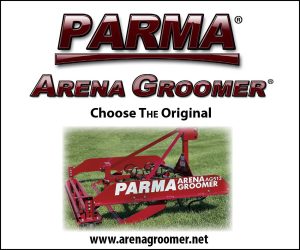Winter can be a challenging time for riders and our horses. Shorter days with inclement weather can make finding time to ride a challenge. Horses confined in paddocks or dry lots during winter still need something to do. Increasing turnout time, allowing social interactions between horses, and providing sufficient forage opportunities are enrichment opportunities critical to the welfare of our horses.
Winter Confinement
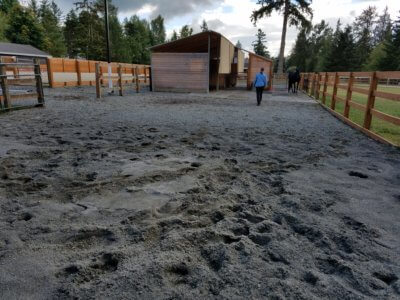
Keeping horses off winter rain-soaked soils or frozen pasture plants is critical for maintaining the integrity of your pasture next summer. Soggy soils or dormant plants grazed below three or four inches simply cannot survive continuous wintertime grazing and trampling. Pounding hooves compact wet soils which suffocate plant roots and create more mud. Overgrazing causes root resorption so grass plants no longer have long, healthy roots reaching deep into the soil utilizing moisture and nutrients.
The alternative to destroying pasture is housing your horse in a mud-free confinement area. However, horses in confinement still need to have their needs met: they need to move about freely, have social contact, and they need access to food at multiple times throughout the day. Even with this, many horses in confinement develop physical or behavioral issues such as pacing, chewing, aggression, nervousness, or ulcers.
What is Equine Enrichment?
Equine enrichment is looking at ways to provide more stimulation in a horse’s environment to benefit their psychological and physical well-being. We all know that our horses are smart—scientific research confirms this—so when confining our horses, we also need to keep their personality in mind.
Here are a few ideas to incorporate enrichment opportunities into a confinement area:
Shape or design of confinement area. You may be able to design your confinement area to encourage interest. Maybe a long, narrow paddock with feeding or water stations at either end? You may wish to research creating a track paddock—or have access to a track paddock for turnout. Or perhaps your confinement area can double as a round pen for extra exercise.
Location. Locate your confinement area so your horse will have interaction and stimulus from the world around them. Set it up so your horse is a part of your everyday life. Seeing things like kids playing, you coming and going, summertime lawn mowers and bicycles, snow shoveling in the winter, etc., all provide stimulus and something for them to look at and think about.
Companionship. Be sure your horse has equine neighbors next door to him that he can at least see and possibly interact with through nose touching or mutual grooming. You may want to consider getting a buddy for your horse, if not another horse perhaps another animal companion for them such as a burro or goat. Often a cat or dog will befriend a horse, improving emotional well-being for each of them.
Rolling area. Rolling is a natural activity that improves coat and skin condition as well as comfort. It is also thought to increase a horse’s flexibility by stretching and engaging muscles in the back, neck, and barrel. If you have room, perhaps you can create a sand pile in your horse’s paddock for this purpose. Alternately, use a sand arena or round pen for regular turnout so they can roll.
Food. More frequent, smaller meals are healthier for horses and mimic the natural lifestyle of a horse. Try feeding in different locations or stations so they do a bit of food seeking. Maybe offer different food types in different areas, like hay cubes or low-quality hay for some extra “chew time.” Consider a hay net or one of the slow feeders on the market which stretches eating time further.
Browsing. You may be able to occasionally incorporate small branches of an edible plant such as willow, cottonwood, bamboo, or blackberry vines. Weave a branch or vine into paddock fencing or incorporate a holder (think umbrella holder) into their paddocks for this purpose. (NOTE: be sure to carefully research what is safe and what is toxic for your area since many species of plants are poisonous to horses such as black walnut, yew, red maple, black locust, rhododendron, laurel, oak, and most fruit trees.) ASPCA has a list of plants toxic and non-toxic to horses, or consult your veterinarian if unsure.
Healthy treats. More food-related ideas include feeding occasional treats like watermelon, plums (without the pit), bananas (skin and all), grapes, celery, or cut-up pieces of raw (orange) pumpkin. These along with other types of low sugar treats available for purchase can be fed in alternative locations to engage curiosity and food hunting behavior.
Toys may help, especially for young horses. Studies show that adult horses are less motivated by toys unless they are associated with food, such as with hay balls or different kinds of treat licks.
Scratching pads or brushes. This could be a large nylon brush, or a worn-out broom head safely bolted to a wall or corner. Or you may be able to find a textured rubber door mat that can be screwed to a wall.
Turn out. Turn out your horse either by himself or with other horses to give them a chance to play and interact.
Exercise. Even if you cannot ride, you can still groom and maintain good hoof care for your horse. Perhaps you can instead hand walk, lunge, or do liberty work with your horse. Plan to exercise your horse a minimum of 30 minutes, three times per week.
Take-Home Message
Utilizing a confinement area decreases winter impact on pastures and improves productivity for the next growing season which means less money spent on supplemental feed and happier, healthier horses. But confinement areas can be stifling for some horses, lacking in physical and emotional stimulus.
Providing enrichment for horses in winter confinement doesn’t have to be expensive and can be as simple as adding turnout time with others, providing forage in a more natural way, feeding a new type of feed or occasional treat, or giving your horse a food ball or lick. Or it might mean scheduling in a little extra one-on-one time with your horse.
Think outside the box, mix things up, have fun together—and rest assured that you are supporting your horse’s emotional well-being at the same time.
Check out the Horses for Clean Water website for information on online classes, private consultations, tip sheets, and other resources for horse keeping and land management education.
See this article in the 2021 January online edition:
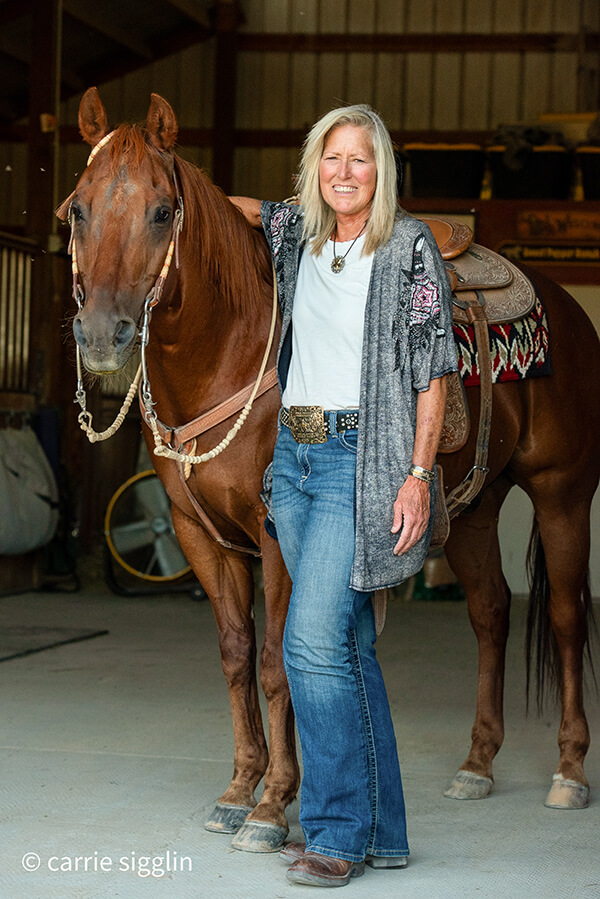
Alayne Blickle began in the 1990’s as a pioneer in water conservation and natural resources conservation by creating the entrepreneurial consulting business, Horses for Clean Water, an award-winning internationally acclaimed education program that looks for horse-healthy, nature-based solutions to land management challenges. She continues this work today partnering with agencies, organizations, and horse owners throughout North America and worldwide. She is a regularly contributing writer and photojournalist to several equine publications.
Alayne lives with her horse trainer husband, Matt Livengood, in southwestern Idaho where they raise and train AQHA horses and mustangs on their eco-friendly horse ranch. Contact her through the Horses for Clean Water website or through their ranch website Sweet Pepper Ranch.
For more information contact Alayne at [email protected] or 206-909-0225.


